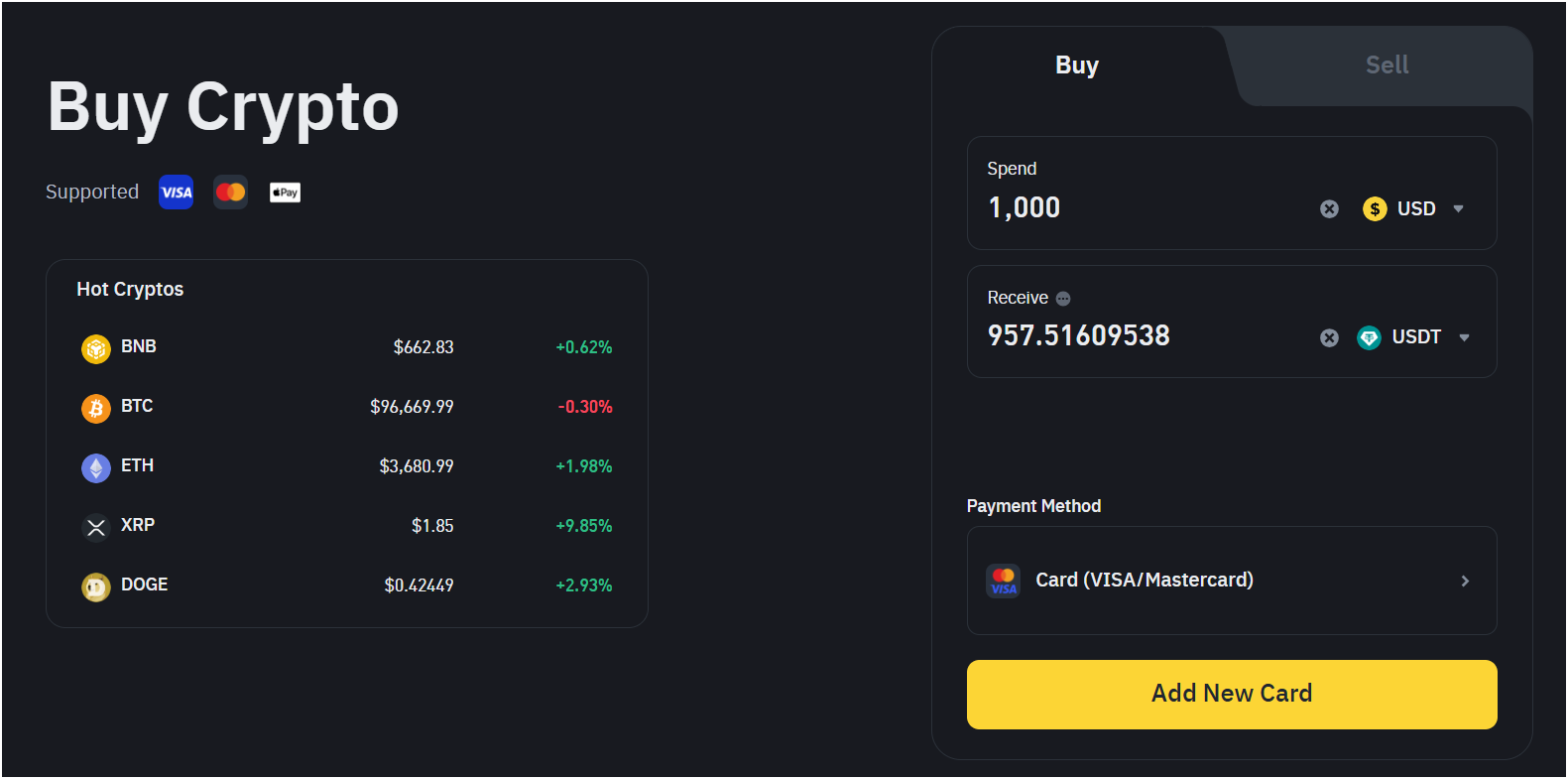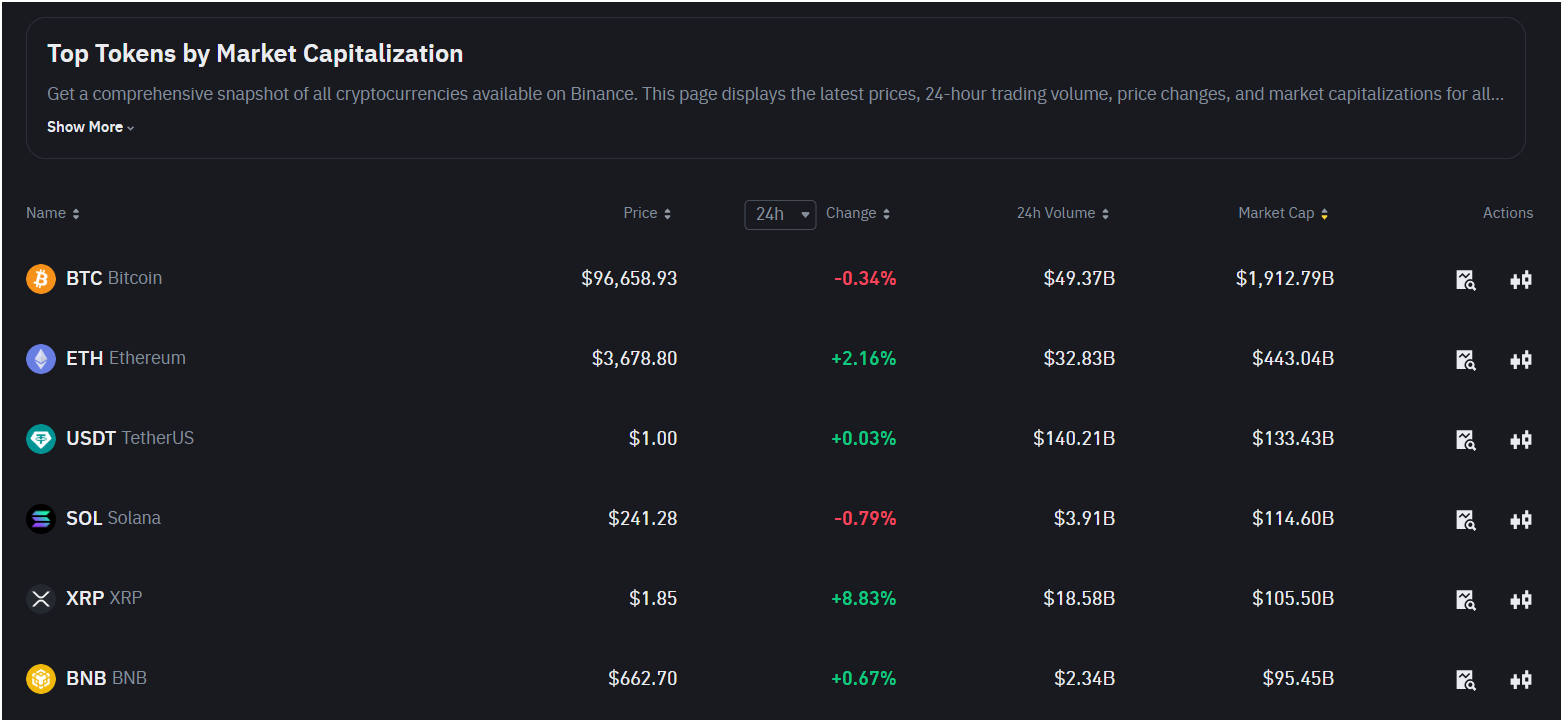Trading Cryptocurrency: A Guide for Beginners
According to CMC data, the cryptocurrency market cap is over $3.4 trillion USD. Cryptocurrency trading might sound confusing at first, but it’s actually something anyone can learn with the right guidance. In this guide, we will show you how to trade cryptocurrency, different strategies, factors to consider, and much more in a step-by-step guide.
Key Takeaways:
Crypto trading involves buying and selling digital currencies like Bitcoin and Ethereum to profit from market price fluctuations.
To trade crypto, you must create an account on an exchange, deposit funds, choose a coin to trade, and execute buy or sell orders based on market trends.
The best strategies include day trading crypto, swing trading, scalping, and holding long-term (HODLing), each suited to different risk levels and time commitments.
What is Cryptocurrency Trading?
Cryptocurrency trading involves buying, selling, or exchanging digital currencies such as Bitcoin, Ethereum, and others. Instead of trading stocks or commodities, you deal with cryptocurrencies, which are digital assets built on blockchain technology. This technology ensures secure and decentralized transactions without central authority control.
Traders engage in cryptocurrency trading to earn profits by taking advantage of changes in market prices. These trades occur on top cryptocurrency exchanges like Binance, Coinbase, or OKX. Some people trade long-term, holding cryptocurrencies to benefit from potential future price increases. Others prefer short-term trading, making frequent trades based on daily or hourly price changes.
There are different trading strategies, including spot trading, where you buy and sell the actual digital asset, and derivatives trading, which involves up to 200x leverage on major trading platforms.
Pros of Crypto Trading
Potential for High Returns: Cryptocurrency prices can rise or fall dramatically in a short time. If you can predict price trends accurately, you have the chance to earn substantial profits.
Non-Stop Market: Unlike traditional stock markets, cryptocurrency markets operate 24/7. This allows you to trade at any time, including weekends and holidays.
Global Participation: Cryptocurrencies are accessible to anyone with an internet connection. You can trade on international platforms from anywhere in the world, breaking down geographical barriers.
No Centralized Control: Because cryptocurrencies operate on decentralized networks, they are not directly influenced by government policies or central bank decisions.
Wide Variety of Tradable Assets: There are millions of cryptocurrencies available, from popular ones like Bitcoin and Ethereum to newer options like meme coins with growth potential.
Cons of Crypto Trading
Price Volatility: The crypto market is known for its unpredictable price swings. While this volatility offers opportunities for profit, it also increases the likelihood of losses if the market turns against you.
Limited Regulations: The cryptocurrency industry lacks the strict regulations found in traditional financial markets. This can leave traders exposed to risks like fraud or lack of legal recourse in disputes.
Technical Issues: Problems such as exchange hacks, wallet failures, or forgetting your digital wallet’s private keys can lead to permanent loss of your funds.
How to Trade Cryptocurrency: Step-by-Step Guide
Cryptocurrency trading is easy when you know the steps. If you are a beginner, don’t worry. Follow this guide, and you can start trading today.
Step 1: Create an Account on Cryptocurrency Exchange
First, you need to create a crypto exchange account. This is like a marketplace where you can buy and sell cryptocurrencies. Some of the popular exchanges are Binance, Coinbase, Bybit, and KuCoin. In this guide, we will use Binance, one of the world’s most popular and trusted crypto exchanges, to show you how to trade step by step.
First, go to Binance’s official website or download the Binance app. Click on “Sign Up” at the top-right corner if you are using the website.
You need to provide your email address or phone number and create a strong password. Binance will also ask you to verify your account. To do this, upload a government ID like a passport or driver’s license. Once Binance confirms your identity, your account will be ready to use.
Binance is free to join, and it supports users from over 180 countries. Make sure you enable two-factor authentication (2FA) for extra security.
Step 2: Deposit Funds to Your Binance Account
After creating your account, log in to Binance. On the dashboard, click “Wallet” and then choose “Overview” and “Deposit”.
Now, deposit funds into your Binance account. Binance gives you many ways to deposit money:
- Bank transfer: You can connect your bank account and transfer money. This usually takes 1–3 days.
- Debit or credit card: Select “Buy With USD” from the top menu and pay using your card. This is instant but may have a 1.8%–4% fee.
- Crypto deposit: If you already have Bitcoin or another coin, you can send it to your Binance wallet by clicking “Deposit Crypto”.
Let’s say you deposit $100 through your card. After the deposit, your funds will show in your Fiat Wallet. You can now use this money to trade.

Step 3: Pick a Cryptocurrency to Trade
On Binance, go to the “Markets” tab on the main menu. Here, you’ll see 350+ cryptocurrencies to trade. Popular options include:
- Bitcoin (BTC): The first cryptocurrency, currently priced around $97,000.
- Ethereum (ETH): Used for smart contracts, priced at $3,600.
- BNB (Binance Coin): The native coin of Binance, priced around $660.
Binance also lists smaller coins (altcoins) like Dogecoin, Solana, and Shiba Inu. If you are a beginner, it’s better to start with larger, more stable coins like Bitcoin or Ethereum.

Step 4: Choose a Trading Strategy
Before you trade, decide how you want to trade. A strategy is like a plan that helps you know when to buy or sell. Let’s look at some common strategies:
- Crypto Day Trading: You buy and sell within a single day to profit from small price changes. For example, if Ethereum rises from $3,280 to $3,720 in a few hours, you sell to earn a quick profit. This needs constant attention.
- Swing Trading: Hold your crypto for days or weeks. This strategy works well when you expect prices to rise over time but don’t want to hold for too long.
- Scalping: This is a very fast strategy where you make many small trades in minutes or hours. You earn tiny profits from small price changes, but it needs a lot of practice. You can use crypto trading bots for this strategy.
- HODLing: This means holding crypto for months or even years. People who bought Bitcoin in 2013 for $100 and held it until 2024 made huge profits when it reached $98,000. This strategy is for patient traders.
- Arbitrage Trading: Buy a coin on one exchange at a lower price and sell it on another exchange where the price is higher. Binance’s low fees make it easier for arbitrage trading.
- Copy Trading: If you are new, you can copy professional traders on Binance’s Copy Trading feature. This lets you follow experts and mirror their trades automatically.
Choose a strategy that fits your time and experience. Never trade without a plan because crypto prices change fast.
Step 5: Make a Cryptocurrency Trade
When you log into Binance, go to the “Trade” section and choose “Spot”. You’ll see a chart showing how the price of your selected cryptocurrency has moved over time.
Let’s say you want to trade Bitcoin. In the top-left search bar, type “BTC” and select a trading pair like BTC/USDT. A trading pair means you’re trading Bitcoin with Tether, which is a stablecoin equal to one US dollar.
You have two main order types when trading: Market Order and Limit Order.
A market order lets you buy or sell crypto at the current price. For example, if Bitcoin is $97,000 and you want to buy instantly, choose a market order, enter the amount (like $970 for 0.01 BTC), and click Buy BTC.
A limit order allows you to set the price. If you think Bitcoin will drop to $96,500, you can set this price. Your order will only be completed if Bitcoin reaches this price.
Binance also supports other cryptocurrency trading methods like 10x margin trading, 125x perpetual futures trading, and options trading.
Once you make a trade, your coins will appear in your Binance wallet. You can sell them later when the price goes up, withdraw them to a wallet, or trade them for other cryptocurrencies.
Step 6: Store Your Purchased Coins
After buying, you need to store your coins. Binance automatically keeps your coins in your account wallet, but this is only for short-term trading. For long-term holding, use a secure crypto wallet.
On Binance, you can use the Binance Trust Wallet, which is a free hot wallet. It’s easy to use but connected to the internet, so it’s less secure.
If you want maximum security, buy a hardware wallet like Ledger Nano X or Trezor Safe 5. These wallets cost around $50–$150 but are offline, so hackers can’t access them.
Crypto Trading vs. Stock Trading: The Difference
| Feature | Crypto Trading | Stock Trading |
|---|---|---|
| Market Hours | 24/7 (always open) | Limited (9:30 AM–4 PM, Mon–Fri, in the US) |
| Volatility | Very high (prices can change 10-50% in a day) | Lower (prices usually move slower) |
| Ownership | Digital assets like Bitcoin or Ethereum | Shares of a company like Apple or Tesla |
| Regulation | Less regulated, varies by country | Highly regulated by governments and laws |
| Accessibility | Easy to start with low amounts (e.g., $10) | Requires brokerage account, higher limits |
| Security Risks | Prone to hacks and scams if not stored properly | Safer, with investor protection policies |
| Trading Fees | Usually lower (0.1%-2%) | Often higher (flat fees or % of trade) |
| Market Size | Around $3.4 trillion total market value (2024) | Over $110 trillion global stock market |
Fundamental Analysis and Technical Analysis
When trading cryptocurrency, you need to decide when to buy or sell. Two important ways to make this decision are fundamental analysis and technical analysis.
Fundamental analysis is about checking the big picture of a cryptocurrency. It’s like asking, “Why is this coin valuable?” You look at things like the purpose of the coin, the team behind it, and how it works.
Bitcoin is valuable because it is decentralized, scarce, and widely accepted. Ethereum is popular because it supports smart contracts and many decentralized apps.
You also check news and events. For example, when big companies like Tesla or PayPal accept Bitcoin, its price usually goes up. If a country bans crypto, the price may fall. Another thing to check is the supply of the coin. Bitcoin has a maximum supply of 21 million coins, which makes it scarce and valuable. Compare this to coins like Shiba Inu, which have trillions in supply and are much riskier.
Technical analysis is different. Instead of looking at news or projects, you focus on charts and numbers. You study how the price of a coin changes over time. Binance and other exchanges have price charts where you can see trends.
In technical analysis, traders use tools like moving averages, which show the average price over a specific period, and RSI (Relative Strength Index), which tells if a coin is overbought or oversold. For example, if the RSI is above 80, the coin might be too expensive and ready to drop.
Pro Tip: Some traders use both methods together. For example, you might use fundamental analysis to pick a good coin like Ethereum and technical analysis to decide the best time to buy it. This way, you combine the long-term potential of the coin with short-term price movements to trade smarter.
Factors to Consider When Trading Cryptocurrency
Liquidity: Liquidity means “high trading volume” or how easy it is to buy or sell a coin. Coins like Bitcoin and Ethereum have high liquidity because many people trade them. This means you can easily sell your coins at the current price. Lower liquidity results in price slippage.
Trading Fees: Every trade has a cost. On Binance, spot trading fees are around 0.1%. If you trade cryptocurrencies a lot, these fees can add up. Some crypto exchanges charge more, especially for credit card deposits or withdrawals. Always check the fees before you trade. If you want zero-fee crypto exchange, MEXC is a great choice.
Security: Crypto trading is not risk-free. In 2024, hackers stole over $1.2 billion worth of crypto. Use exchanges like Binance that have strong security features, like two-factor authentication. Never share your passwords, and if you’re holding crypto long-term, use a hardware wallet.
Regulations and Taxes: Different countries have different rules for crypto. For example, some countries ban trading, while others like the USA allow it but with taxes. In the USA, you have to pay taxes on crypto profits. Know the rules in your country to
Source : nftevening.com
